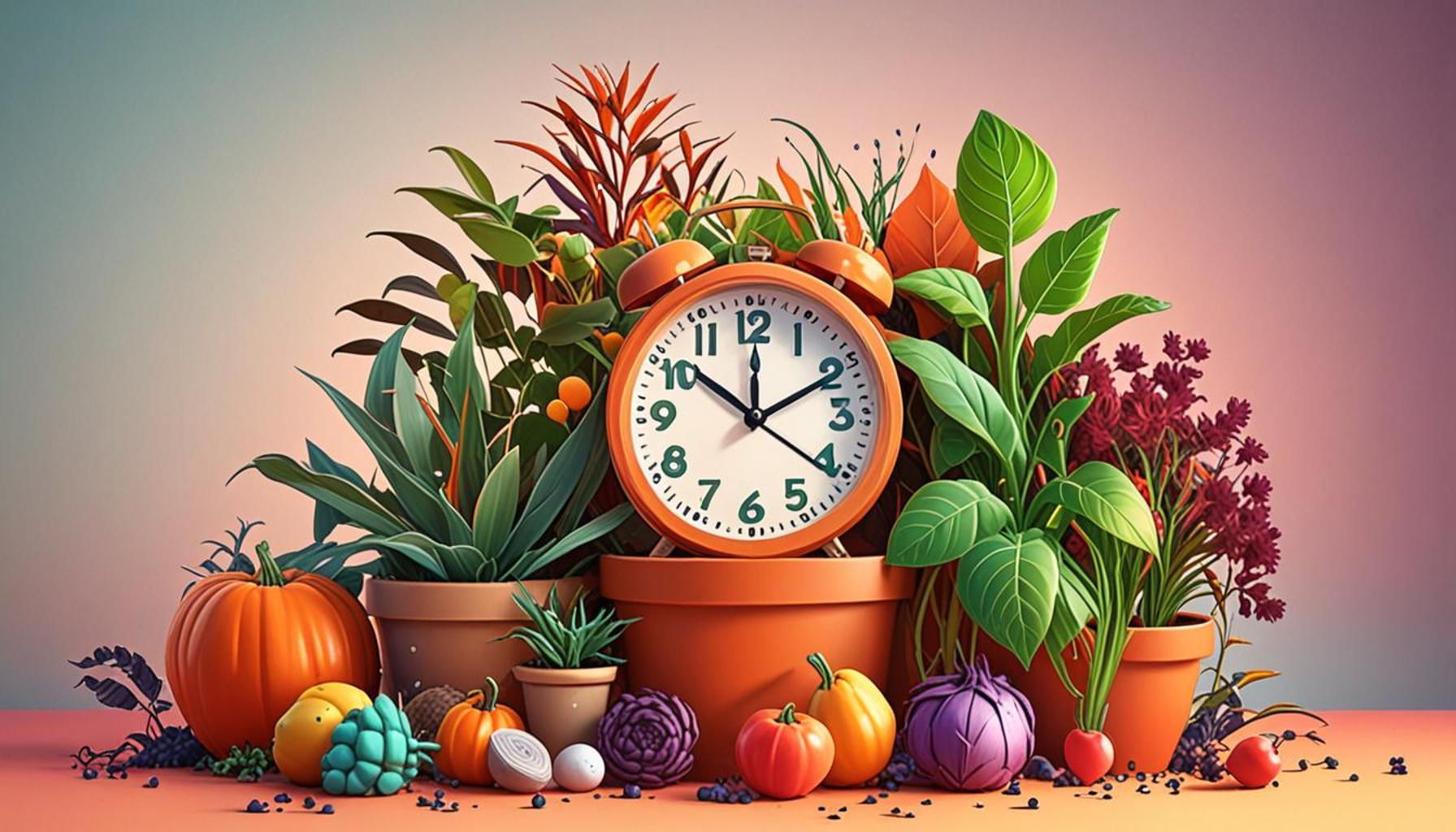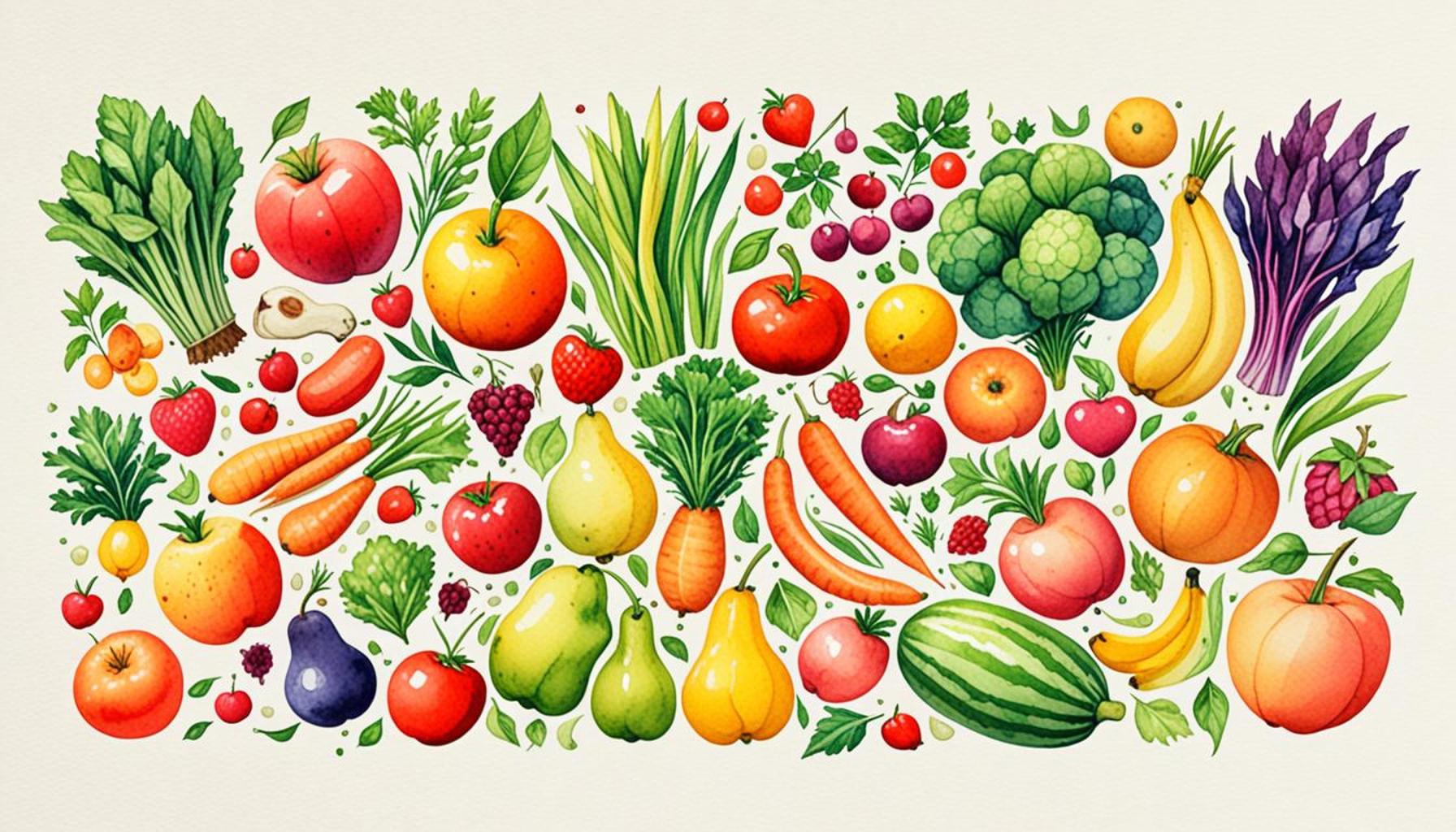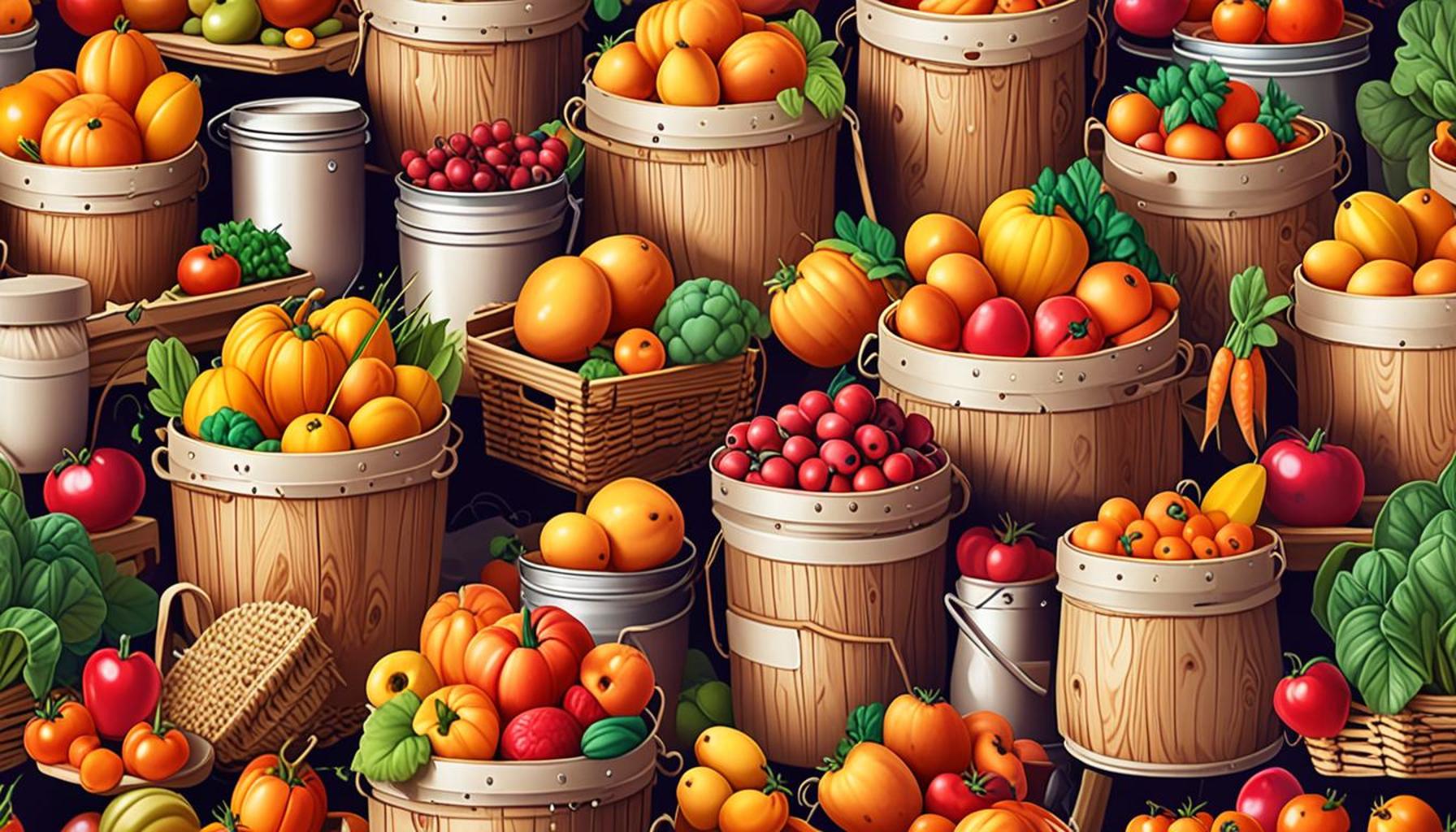How to Identify the Right Time to Harvest Your Plants: Tips for Beginners

Timing is Everything
Understanding the optimal moment to harvest your plants is crucial for a successful gardening experience. The difference between a flourishing crop and a disappointing yield often comes down to timing. For many novice gardeners, knowing when to pick their fruits, vegetables, or herbs can be a daunting challenge. However, mastering this skill is vital for enhancing both the flavor and nutritional value of your produce.
Several key factors can help you determine the right time to harvest, each providing unique signs of readiness:
- Color Changes: One of the most noticeable indicators of ripeness is the change in color. For instance, tomatoes transition from green to a rich red, signaling that they are ready to be eaten. Similarly, bell peppers change from green to yellow or red as they mature. Observing these color shifts can guide you to the optimal harvesting time.
- Size: Different types of plants have distinct size standards that suggest they are ready for harvest. Zucchini, for example, should ideally be picked when they are 6 to 8 inches long. If left too long, they can become oversized, tough, and less flavorful. Researching specific size guides for each type of plant you grow can be incredibly beneficial.
- Texture: The texture of the harvest can also provide important clues. For example, cucumbers should feel firm yet slightly soft to the touch when ripe. Conversely, if they are still hard, it often indicates they need more time on the vine. Learning to gauge texture becomes easier with practice and experience.
- Taste: One of the most enjoyable methods to determine ripeness is through sampling—tasting the food! With fruits like strawberries or snap peas, a quick nibble can reveal whether they have developed the desired sweetness and flavor.
In this comprehensive guide, we’ll delve deeper into the key indicators that suggest when to harvest several common plants. You’ll also learn how to utilize tools such as garden calendars and growth charts, which can provide a framework to work from for more effective and timely decisions.
Whether you’re cultivating tomatoes in your backyard garden or nurturing fresh herbs in your kitchen window, knowing when to gather your crops is vital for ensuring top-notch quality. Join us as we unravel essential tips tailored specifically for beginners navigating the intricate but rewarding world of plant harvesting.
Ultimately, taking the time to understand the various indicators will not only elevate your gardening skills but also deepen your appreciation for the entire growth process. Happy harvesting!
DISCOVER MORE: Click here for expert tips on choosing low-light plants
Reading the Signs: A Gardener’s Guide
As you embark on your gardening journey, understanding how to properly gauge the readiness of your plants becomes essential for ensuring a bountiful harvest. Each type of plant comes with its own specific indicators, which can sometimes be puzzling for beginners. Here are a few key indicators to observe closely:
- Days to Maturity: After planting, each vegetable or fruit will have a specific number of days to maturity, often provided on the seed packet or plant tag. This period serves as a useful guideline for when to expect your produce to ripen. For example, cucumbers typically take about 50 to 70 days from sowing to harvest. Marking these days on a calendar can help you keep track of when to start looking for signs of ripeness.
- Environmental Factors: Weather and climate play a pivotal role in the growth of your plants. Temperature fluctuations, humidity levels, and sunlight exposure can all affect the rate at which your crops mature. Monitoring local weather conditions can help you make informed decisions about when to harvest. For instance, early morning is often the best time to pick fruits and vegetables, as they are crisp and fresh at this time.
- Foliage Health: The condition of your plants’ leaves can offer insight into their overall health and readiness for harvest. A plant with yellowing leaves or wilting foliage may indicate that it’s stressed or past its prime. Understanding the relationship between the foliage and the fruit can help you determine the right time to pick. Healthy and vibrant leaves typically correlate with robust fruit.
- Seed Development: For some plants, especially legumes like peas and beans, the development of seeds can signal ripeness. When the pods start to bulge with seeds, it’s usually a strong indication that it’s time to harvest. Touching the pods to gauge firmness and fullness can aid in your assessment.
A little patience can go a long way as you familiarize yourself with these indicators. Keep a garden journal to document your observations and experiences, noting when you harvest specific plants. This will not only help you refine your timing in the future but also deepen your understanding of the growth cycles of your favorite crops.
Knowing the right time to harvest will reward you immensely in terms of flavor, texture, and nutritional value. As you grow more confident in your choices, you’ll find that the world of gardening opens up a rich tapestry of flavors waiting to be savored. Explore the various plants in your garden, and soon you’ll be able to confidently determine when each one is ready to grace your table.
How to Identify the Right Time to Harvest Your Plants: Tips for Beginners
Knowing when to harvest your plants can significantly impact the quality and flavor of your produce. In this section, we will explore key signs to watch for across various plants, ensuring that you maximize your garden yield. Timing your harvest not only enhances taste but also contributes to the longevity of your plants and overall garden health.
Observe Color and Texture
One of the first indicators of readiness is the color and texture of your fruits and vegetables. For example, ripe tomatoes often change from green to a vibrant red. Similarly, bell peppers shift from green to yellow or red as they mature. Check for a smooth skin texture—rough or blemished surfaces can indicate overripeness.
Check for Size
Every type of plant has its own growth cycle and size benchmarks. Regularly measuring the size of your produce can yield vital clues. Consider using a sizing guide for your specific plant varieties. For instance, cucumbers are typically ready when they reach 6-8 inches in length, while zucchini is best harvested at around 7 inches.
Time Your Harvest for Peak Flavor
Many gardeners find that harvesting in the early morning, when moisture levels are higher, can enhance the flavors of the crops significantly. Additionally, some crops, like herbs, may develop stronger flavors just before they bloom, making this a great time to harvest.
| Indicator | Details |
|---|---|
| Color | Ripening fruits display a vibrant change that signals readiness. |
| Size | Regularly measure your plants to catch them at their optimal size. |
Look for Plant Signals
Beyond visible signs, plants often exhibit subtle behavioral changes before they are ready for harvest. For leafy greens, for instance, the leaves might start to yellow or lose firmness as the plant bolts (produces flowers). When you notice these signs, it’s time to act!
By learning to read these indicators, you ensure that you harvest at the ideal time, ultimately enhancing not just your gardening experience, but also your culinary successes. Keep observing and experimenting, and soon you’ll be an expert in determining the perfect harvest time.
DISCOVER MORE: Click here to enhance your gardening skills
Embracing the Unique Traits of Your Crops
Understanding your plants’ unique characteristics is a vital step in mastering the timing of your harvest. Different crops require distinct methods of assessment to ascertain their peak ripeness. Let’s delve into some practical attributes to observe, empowering you to harvest with confidence.
- Color Change: Many fruits and vegetables undergo a color transformation as they ripen. Take tomatoes, for instance; the shift from green to a rich red hue signals that they are ready to be plucked. However, it’s essential to know the specific variety you are growing, as certain heirloom tomatoes can display a range of colors. Similarly, peppers change from green to shades of yellow, orange, or red depending on the type, indicating their readiness for harvest.
- Size Matters: Each fruit and vegetable has an ideal size at which it is best harvested. For example, zucchini should be picked when they reach about 6 to 8 inches long; any larger, and they may become tough and seedy. The key is to familiarize yourself with what constitutes an appropriate size for each crop. Measuring one or two samples against these benchmarks can help refine your understanding of when to harvest.
- Aroma: A plant’s scent, especially with herbs, can be a strong indicator of ripeness. For instance, basil and mint become more fragrant as they mature; their robust aromas are a telltale sign that you can start enjoying their flavors. Pay attention to your senses: vibrant aromas usually signify that herbs are ready to be picked and used in your culinary creations.
- Texture and Firmness: The physical feel of the produce can indicate readiness. For instance, for fruits like peaches and avocados, a gentle squeeze can reveal their ripeness—firm but yielding to slight pressure signals they are ready to be harvested. Practice testing some of the fruits and vegetables multiple times to learn their ideal texture at harvest time. This tactile knowledge will enhance your growing expertise.
It is essential to develop a relationship with your plants by observing them regularly. A consistent gardening routine will allow you to notice the gradual changes that signal ripeness. Think of harvesting as a celebration of your hard work; each plant tells a story through its growth cycle. By paying attention to their signals, you’ll uncover the nuances of your crops, fine-tuning your harvesting techniques over time.
As a beginner gardener, getting to know the timing of your plants can be a rewarding experience, transforming your understanding of gardening. Don’t hesitate to reach out to local gardening clubs or online forums for regional advice—local knowledge is invaluable when learning how weather and soil conditions influence crop maturation. By doing so, you’ll not only improve your skills but also build a community around shared gardening practices.
Remember that patience pays off in gardening. Mastering the timing of your harvest is an art that is cultivated through experience and observation. Each growing season will present new challenges and insights, making your journey not just about the harvest but the learning and enjoyment along the way.
LEARN MORE: Click here to discover the best plant options for your garden</
Conclusion: Harvesting Like a Pro
Successfully identifying the right time to harvest your plants is an essential skill for any budding gardener. As we’ve explored, factors such as color change, size, aroma, and texture play a crucial role in determining the perfect moment to reap your rewards. By familiarizing yourself with these indicators, you elevate your gardening abilities and deepen your connection to the processes of growth and nourishment.
Moreover, cultivating an awareness of your plants fosters a sense of anticipation and excitement as you await the fruits (and vegetables) of your labor. Remember that patience and observation are key; each season brings new lessons and opportunities to refine your techniques. Engage with both local and online gardening communities, as they provide valuable insights tailored to your specific region—advice that can significantly enhance your understanding of when your crops will be at their prime.
As you embark on this journey, keep in mind that harvesting is not just about timing; it is a celebration of your dedication. Alongside the joy of collecting your harvest, you gain essential experience that will serve you well in future gardening endeavors. So gather your tools, trust your instincts, and watch as your hard work transforms into vibrant produce, enhancing your meals and your gardening prowess.


